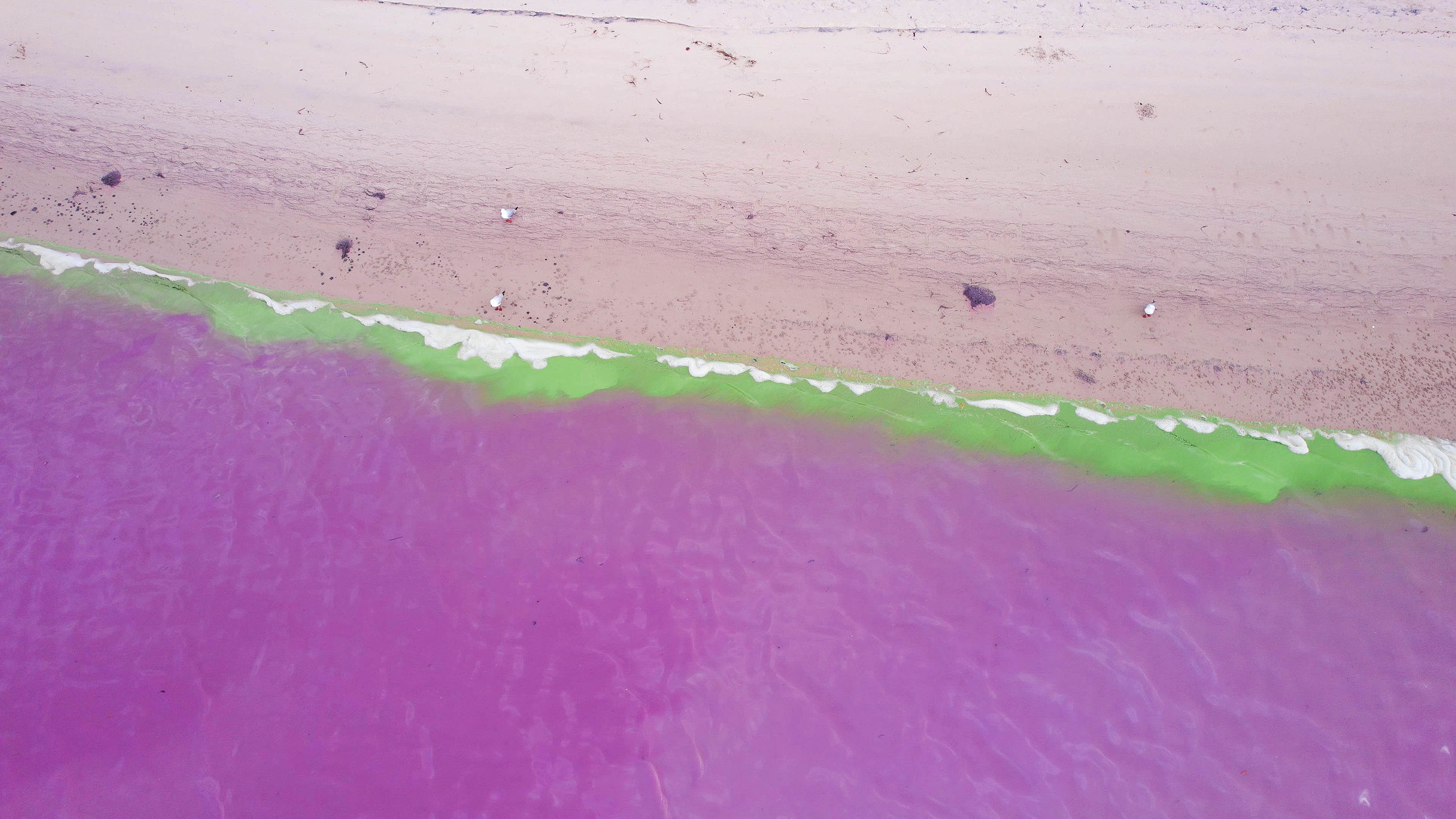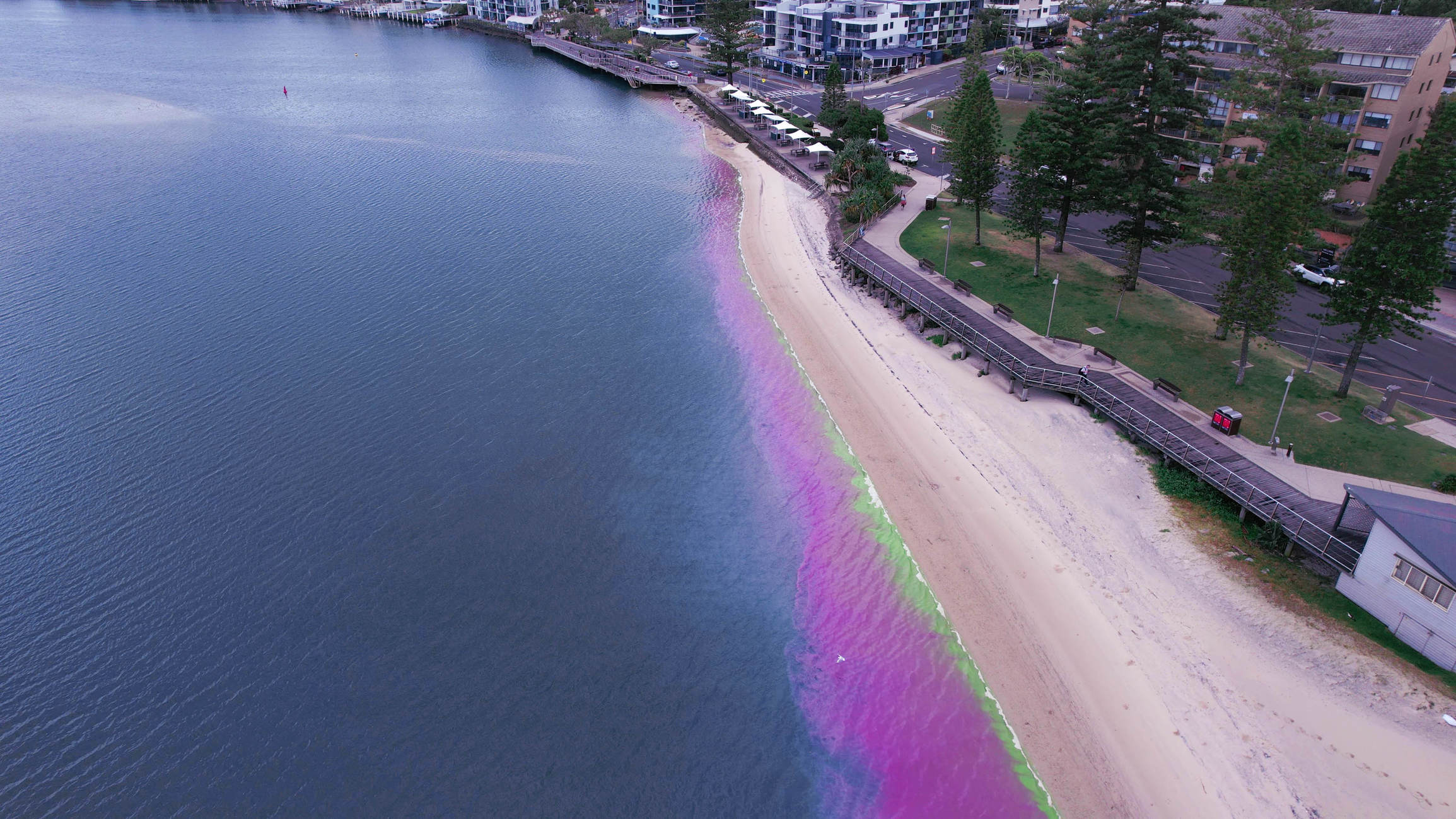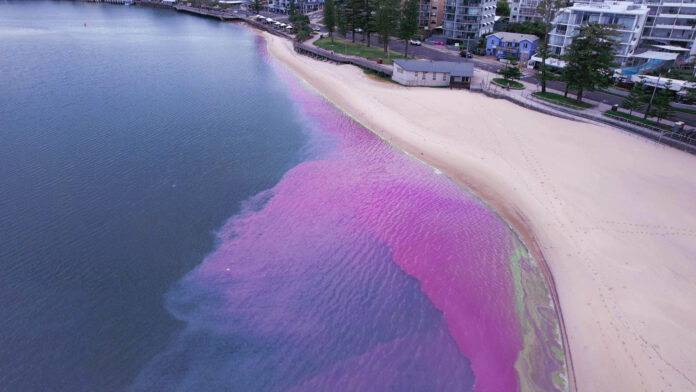Startling shades of pink and green have been dazzling many Sunshine Coast beachgoers during the past couple of weeks.
The colours have been seen mainly at Bulcock Beach at the northern end of the Pumicestone Passage, and also at Pelican Waters and Currimundi lakes.
Photographer/videographer Damien Lange was among those wondering what caused the scene, as he captured amazing footage and photos for droner.au.
“A walker passed by and mentioned it to me, so I flew the drone over and was blown away by the colour,” he said.
“It didn’t seem to be oil, as it was in the water and not on top.
“And I have heard of a pink algae, but not on a waterway.”
Many people took to social media and debated what it could be, with some suggesting it was coral spawn.
Take Action for Pumicestone Passage (TAPP) president Ken Mewburn was among those to confirm it was Trichodesmium, a type of blue-green algae.
“It’s part of the natural food chain in the marine environment,” he said.
“Under certain calm water conditions it can rise to the surface and create visible blooms, which can be brown stringy clumps which look a bit like sawdust, or pink or green.
“Or it can develop into a dense grey or purple, which can look like oil spills.”
Sunshine Coast Council said it was a natural event that moved into the area with the tides, before becoming pronounced.
“The combination of calm conditions, northerly currents and warm water temperatures causes increased growth, with cell density often becoming great enough to colour the water, creating a bloom,” it said.
“If allowed to stagnate, Trichodesmium can release a clear, water-soluble toxin. This is indicated by a change in colour … from a rusty brown to a green colour accompanied by the release of a pigment, which will colour the water pink.”
Council said the algae “is generally not harmful” and “it can easily be washed off with clean water” but “if they deplete the oxygen content of the water, they can cause death to aquatic animals”.
Bulcock Beach was closed on Saturday morning, when the algae bloom temporarily washed up on the shore, before reopening during the day.
It’s expected the bloom will be flushed along the shoreline with the tides associated with the new moon.

Dr Peter Kamen, a research fellow at UniSC’s Centre of Bioinnovation, said Trichodesmium was particularly evident at the northern end of the passage because of the lack of water movement there.
“It is a naturally occurring bloom (caused by) water temp, pH, salinity, lack of water flow and phosphate and iron levels,” he said.
“The bloom occurs commonly at this time of year but is a problem at Bulcock Beach due to a lack of water flow past the swimming area, where it can collect.
“It is not toxic but can be smelly, and swimmers are advised to avoid swimming in the water affected by a bloom (as a precaution).”
Dr Kamen also said Trichodesmium could lead to other harmful blooms.
“It converts nitrogen in the air to ammonia, which can be used by other planktonic species for their growth. It may increase the risk of other blooms including dinoflagellates, which can be toxic,” he said.

Dr Kamen is a GP by trade but has focused on water studies since retiring from full-time practice. He sends photomicrographs to CSIRO research scientists to help with microalgae identification and his research interest at UniSC includes doing a planktonic survey of the northern passage area.
He is the head of TAPP’s water quality sub-committee and said the community group was working with the Department of Environment and Science, which is regularly testing the water in the northern end of the passage. The area has become largely obstructed by sand banks, following a tidal breakthrough at Bribie Island early last year.
“The water quality in the northern end is being monitored and appears to be okay so far,” he said.
“It needs careful scrutiny by the DES (Department of Environment and Science).”
Sunshine Coast News was also awaiting comment from a coastal or microbial expert from the University of the Sunshine Coast.





